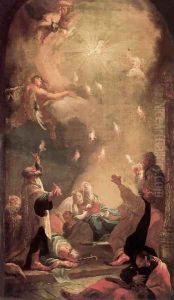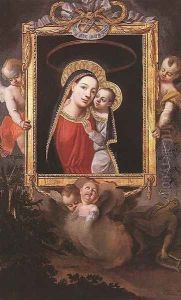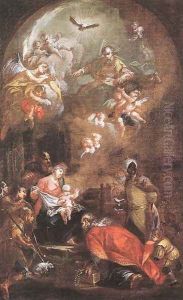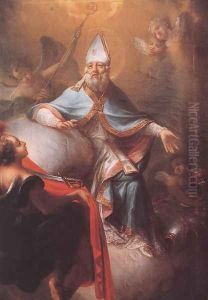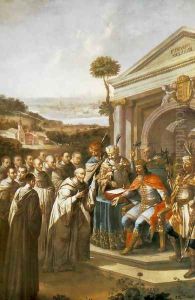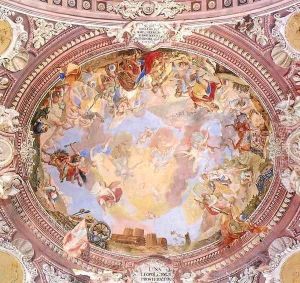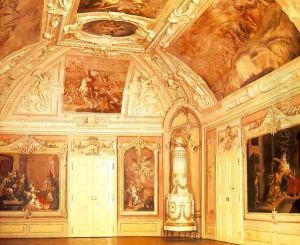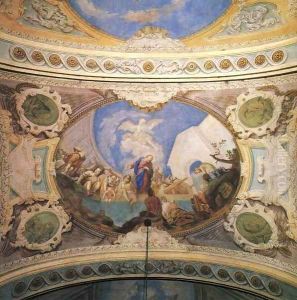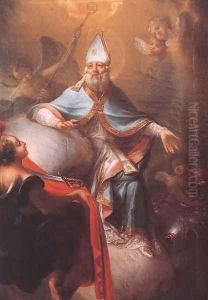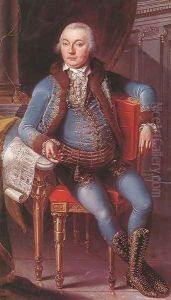Istvan Dorffmaister Paintings
Istvan Dorffmaister, also known as István Dorfmeister, was a notable Hungarian painter who made significant contributions to the art world in the 18th century. Born in 1729 in Pressburg, then part of the Kingdom of Hungary (now Bratislava, Slovakia), Dorffmaister was active during a period that witnessed the Baroque style transitioning into Rococo and later, Neoclassicism.
Dorffmaister initially studied painting in Vienna, which was a major cultural center at the time. His early works were influenced by the Baroque tradition, which was prevalent throughout Europe. He later developed a style that incorporated elements of the emerging Rococo aesthetic, characterized by lighter colors, graceful lines, and a more playful and ornamental approach to subject matter.
Throughout his career, Dorffmaister was known for his religious works, portraits, and frescoes. His paintings often depicted scenes from the Bible, the lives of saints, and other ecclesiastical subjects, which were common themes in the art of the period. He worked extensively on commissions for churches and monasteries, where his frescoes adorned the walls and ceilings, contributing to the rich visual culture of ecclesiastical spaces.
One of the highlights of his career was the work he did for the Martinsdom (St. Martin's Cathedral) in Bratislava. His paintings and frescoes there are considered some of his finest achievements, showcasing his skill in composition and his ability to work on a grand scale. These works are still appreciated today for their artistic quality and historical significance.
Istvan Dorffmaister's artistic legacy is important for the understanding of Central European art of the 18th century. His works reflect the artistic trends and cultural influences of his time, and they continue to be studied for their craftsmanship and stylistic attributes. He passed away in 1797, leaving behind a body of work that remains significant in the history of Hungarian and Slovak art.
